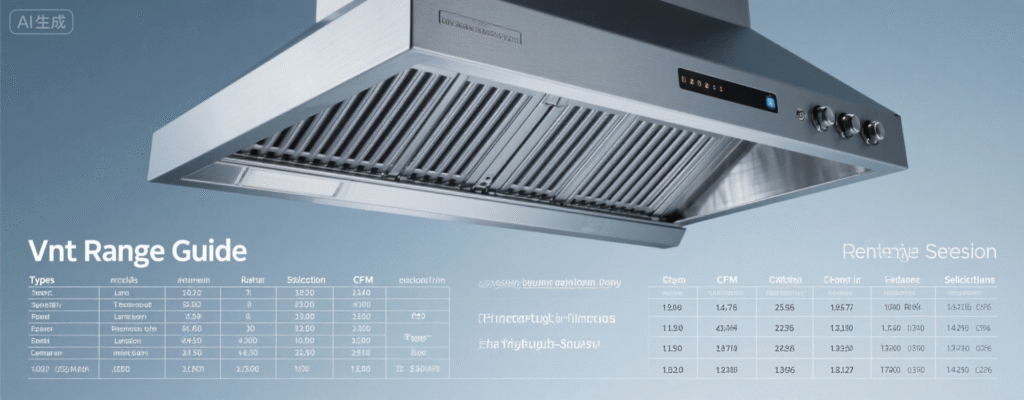A properly selected vent hood range is a critical, yet often overlooked, component of a functional and healthy kitchen. This article will guide you through the essential types of ventilation systems and the key performance metrics you need to consider. Making an informed choice ensures you effectively remove airborne grease, moisture, and cooking odors, protecting your home and indoor air quality.
Choosing the Right Type of Ventilation
The first and most fundamental decision is between ducted and ductless (recirculating) models. A ducted hood is the superior option for performance, as it expels contaminated air directly outside your home. This system captures smoke, steam, and grease particles and removes them entirely from your living environment. According to the U.S. Environmental Protection Agency (EPA), improving ventilation is a key strategy for reducing indoor air pollutant levels, which can be two to five times higher than outdoor levels.
In contrast, a ductless hood pulls air through charcoal filters to remove odors and grease before recirculating the air back into the kitchen. While easier to install where ductwork is not feasible, these filters require regular replacement (typically every 3-6 months with heavy use) and are less effective at removing heat and moisture. For serious cooks, a ducted vent hood is the unequivocal recommendation for maintaining a clean and comfortable kitchen atmosphere.
Understanding Performance and Suitability
Once you’ve decided on the type, the next step is to evaluate performance, primarily measured by CFM (Cubic Feet per Minute). This rating indicates how much air the hood can move. A general rule of thumb is that you need 1 CFM per 100 BTUs of your cooktop’s power. For a high-output 60,000 BTU gas range, you would need a hood rated for at least 600 CFM.
However, more CFM is not always better. The Home Ventilating Institute (HVI), an authoritative source for certified product performance, provides guidelines for recommended CFM levels based on kitchen size and appliance type. Furthermore, higher CFM models (often those over 400 CFM) may require make-up air systems to balance the air pressure in your home, as mandated by many building codes. The physical size of the hood is also critical; it should be at least as wide as your cooking surface to effectively capture contaminants. Selecting the correct range hood involves balancing power, noise level (measured in sones), and the specific layout of your kitchen for optimal results.
In summary, selecting the ideal vent hood range is a deliberate process that hinges on choosing between ducted and ductless systems and matching the hood’s CFM and size to your specific cooking habits and kitchen layout. By prioritizing effective ventilation, you invest in an appliance that safeguards your health, protects your cabinetry from grease, and ensures a more pleasant cooking environment for years to come. Make an informed decision to truly elevate your kitchen’s functionality.
